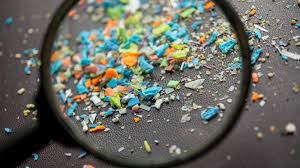
Public health
research project
Public health - How microplastics may influence human health
Main-author: Ioana Caprar,
Faculty of Environmental Science, Babes-Bolyai University, Cluj-Napoca, Romania;
Research Institute of Water and Environmental Engineering (IIAMA), Polytechnic University of Valencia, Spain
-to be continued-
-scratch of an ongoing project-
Sed ut perspiciatis unde omnis iste natus error sit voluptatem accusantium doloremque laudantium totam rem aperiam eaque ipsa quae ab illo inventore veritatis et quasi architecto beatae vitae dicta sunt explicabo nemo enim ipsam voluptatem.

Intro
Microplastics—tiny plastic particles less than 5 millimeters in size—are increasingly recognized as a potential threat to human health. They originate from the breakdown of larger plastic waste or are manufactured intentionally (like microbeads in cosmetics).
They can enter the human body via ingestion, inhalation, and potentially through skin contact.
1. Routes of Exposure
-
Ingestion: Found in seafood, salt, bottled water, fruits, and vegetables.
-
Inhalation: Airborne microplastics are present in indoor and outdoor air.
-
Dermal Contact: Less studied, but some concern exists for contact with personal care products and textiles.
2. Potential Health Effects
Although research is still developing, potential health concerns include:
a. Physical Effects
-
Microplastics may cause inflammation and cellular damage when ingested or inhaled.
-
They can accumulate in organs like the gut, lungs, liver, and potentially placenta (found in some studies).
-
Blockage or irritation in the gastrointestinal tract may occur.
b. Chemical Toxicity
Microplastics can leach toxic additives and adsorb environmental pollutants such as:
-
Phthalates
-
Bisphenol A (BPA)
-
Heavy metals
These substances are linked to endocrine disruption, reproductive harm, and cancer risks.
c. Immune System Impact
-
Some studies suggest immune cells may recognize microplastics as foreign particles, potentially triggering chronic immune responses or autoimmune-like reactions.
-
Evidence of oxidative stress and inflammatory responses in lab studies.
d. Microbiome Disruption
-
Ingestion of microplastics may alter the gut microbiome, potentially leading to digestive disorders, immune dysfunction, or metabolic changes.
3. Vulnerable Populations
-
Infants: May ingest more microplastics due to feeding bottles and crawling on floors.
-
Pregnant women: Studies have detected microplastics in placental tissue.
-
Occupational exposure: Workers in plastic manufacturing or textile industries are at higher risk of inhaling microplastics.
4. Knowledge Gaps and Uncertainties
-
Long-term epidemiological studies are still lacking.
-
It's unclear how efficiently microplastics are excreted versus retained in the body.
-
Dose-response relationships remain poorly understood.
5. Current Research and Regulation
-
Efforts are ongoing to assess exposure levels and toxicological thresholds.
-
Regulatory bodies like the WHO and European Food Safety Authority (EFSA) are investigating risks.
-
Calls are growing for stricter controls on plastic production, use, and disposal.
Summary
Microplastics pose a potential but not yet fully understood risk to human health. Current evidence suggests they may cause inflammation, oxidative stress, chemical toxicity, and immune or microbiome disruption. However, more robust human studies are needed to draw definitive conclusions.
Ioana Caprar, 27.05.2025
